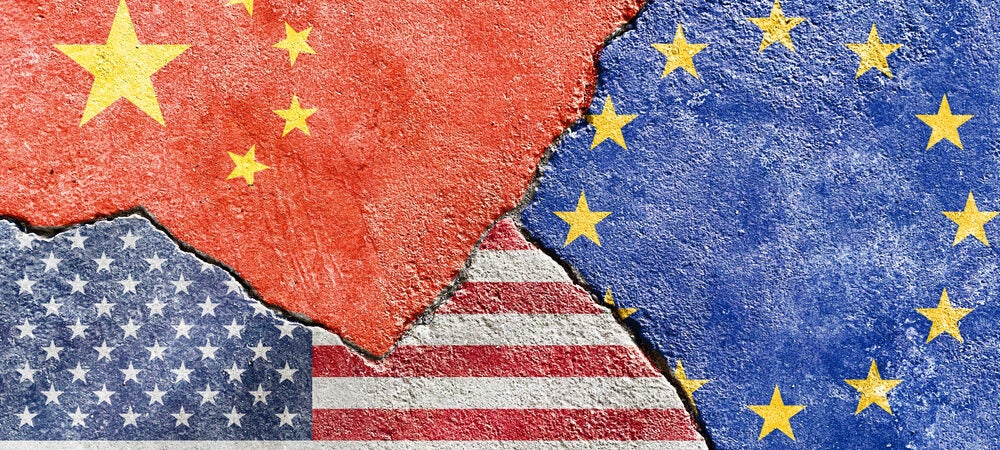China reported remarkably weak trade numbers for November, underscoring its lingering difficulties with the Covid-19 pandemic, as well as a slump in consumption of consumer goods in the U.S.
Overall, total Chinese exports in November fell 8.7% year-on-year to $296.1 billion, more than double the percentage drop that analysts had forecast. It was far worse than a 0.4% year-on-year drop in October, and the worst performance since February, 2020.
The decline was made up above all of a slump across a wide swath of manufactured consumer goods that Americans consume. Exports of high-tech products, for example, declined 23.6% to $74.8 billion. Exports of mobile phones were down 33.3% to $11 billion. Exports of toys declined 21.7% to $3.6 billion, and shipments of textiles fell 14.8% to $11.3 billion.
There was a notable exception. Exports of motor vehicles, a burgeoning industry in China, including the production of electric cars, surged 113.3% to $7.7 billion.
The bleak picture has been attributed in part to China’s strict Covid-19 controls, which has shut down businesses and confined millions of people to their homes.
But the bigger structural problem is that people in the U.S., traditionally China’s top market, have less money in their pockets after their stimulus payments have run out and less capacity to borrow as interest rates spike, and that’s affecting China. Exports to the European Union dropped 10.5% to $44.8 billion, while exports to the U.S. fell 25.4% to $40.8 billion, knocking the U.S. into second place behind the EU among China’s trade partners.
The weaker global economy is why China’s economy is now forecast to expand by only 3% in 2022, below the government’s aim of 5.5%. As banks in Washington and Frankfurt raise interest rates to tame inflation, the picture is expected to get worse before it gets better.
The economic picture is accentuating protectionist sentiment in Washington and beyond, and spooking corporations, including Apple, who are moving their supply chains closer to home, a trend known as “nearshoring” or “friendshoring”, rupturing ties with established manufacturers in China, and further deflating trade.
One exception continues to be ASEAN countries, where Chinese companies have been finding new, enthusiastic buyers for their products. Shipments to ASEAN countries rose 5.7% to $50.3 billion. Perhaps as a response, EU-U.S. trade has been increasing, according to trade statistics.
Beijing responded to the tepid exports by saying it would seek to stimulate domestic demand.
Total imports dropped 10.6% year-on-year in November to $226.3 billion. Imports dropped in almost every category. Inward shipments of motor vehicles, for example, fell 21.2% to $4.2 billion. There were only a few exceptions. Imports of vegetable oil rose 73.7% to $1.4 billion. Imports from the EU declined 16.2% to $22.9 billion, while shipments from the U.S. fell 7.1% to $16.5 billion.
It looks like a bleak picture, but China is such a massive economy that there are always some silver linings, niche areas of the global economy where it has an edge.
The reorientation of global energy markets has created opportunities for China’s petroleum sector. China has emerged as the key swing buyer, and processor and re-exporter, of Russian oil and gas coming on the market as traders prepare for a European embargo. Imports from Russia increased 26.8% to $10.5 billion.
China is importing more petroleum, and then processing and reexporting refined fuel at a profit, according to trade statistics. Imports of petroleum rose 11.8% year-on-year in November by quantity to 46.7 million tons. By value they increased 26.8% to $31.6 billion.
Meanwhile, China exports of petroleum products, mainly fuels, rose 46.6% by volume to 6.1 million tons. Because of price increases, by value they increased 98% to $5.4 billion. And Russia is becoming a better export market, too. Exports to Russia rose 18% to $7.7 billion.
On Monday, in a video conference, Premier Li Keqiang said the two nations would continue their cooperation.
John W. Miller is Trade Data Monitor’s Chief Economic Analyst, in charge of writing TDM Insights, a newsletter analyzing key issues through trade statistics. John is an award-winning journalist who’s reported from 45 countries for the Wall Street Journal, Time Magazine, and NPR.

